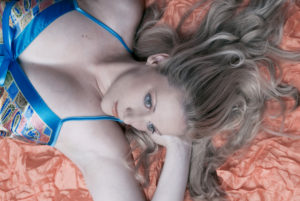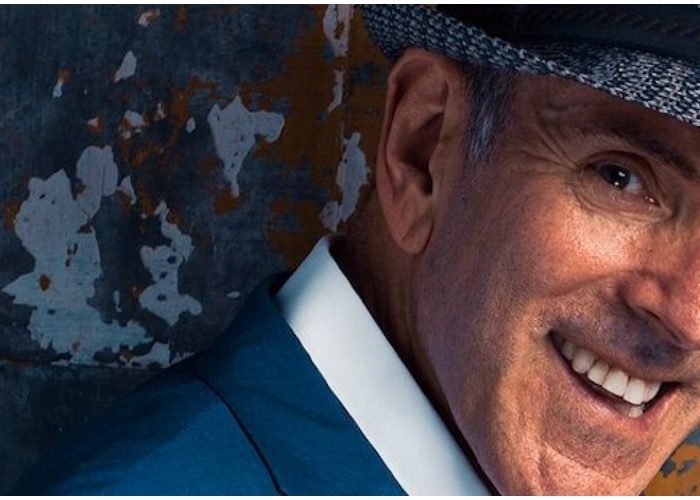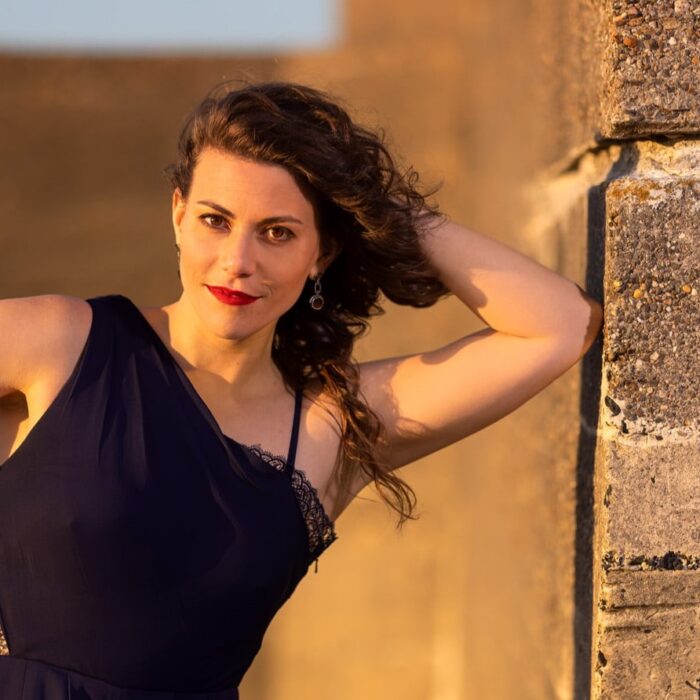
Q & A: Soprano Saioa Hernández On Her Big Breakout & Growing Stardom
By Francisco SalazarLegendary soprano Montserrat Caballe once said, “Saioa Hernández is the diva of our century and the theaters are sleeping because she should be in every single one.”
Up until this year, Hernandez had been performing in the smaller European theaters to great acclaim and slowly moving up the ranks. But she was far from a household name in the opera world.
Then it all changed.
Since her debut at the Teatro alla Scala, the soprano from Madrid is getting calls from the top opera companies around the world.
In just the last few months she has debuted at Royal Opera, Gran Teatro del Liceu and Semperoper Dresden, and that’s just the start of what will be an even more packed 2019-20 season when she will be headlining three new productions at the Teatro alla Scala and a gala performance in honor of Plácido Domingo.
In the midst of this ever-busy schedule, Hernandez spoke to OperaWire about her upcoming debuts and what she looks forward to performing at the Teatro alla Scala.
OperaWire: This season you have made numerous important debuts including the Teatro alla Scala, Gran Teatro del Liceu, Semperoper Dresden, and the Royal Opera House. How do you feel about this progression in your career?
Saioa Hernández: I am incredibly happy to have the privilege of working in what I love and to see how hard work and commitment brings these great opportunities. It doesn’t always happen, but I believe that when you are consistent and you work hard, there is always a reward and I feel fortunate about all that has happened to me.
I think that after the Teatro alla Scala, these theaters seemed like the next path in my career. I made my debut at the Royal Opera and the Liceu in two operas I absolutely love and which I first sang in the Circuito Emiliano in Italy. Both debuts were challenging because they were last minute substitutes and thankfully they were both successful. I was also able to share the stage with great colleagues, especially Roberto Alagna at the Royal Opera, a tenor my husband and I have admired for many years.
I was also able to share the stage with Plácido Domingo in my debut as Abigaille in “Nabucco” in Dresden. He is a great and universal artist who was an amazing colleague and was so committed to this art form. It has been a dream come true.
OW: How have these opportunities changed the way you view your career and the responsibilities that come with it?
SH: I have always believed that the level of responsibility is created by yourself and that it should always be on your mind from the beginning when you start studying singing. The moment you begin as a student and you get your first contracted performances, you have the option of taking them with the most responsibility or not. From there you can start to really evaluate the work you put into it.
For my part, I have always felt the same responsibility for my work. It didn’t matter whether it was when I did operas with piano for 300 people to now where I sing at the top theaters in the world. It’s all about how much commitment you put into this career, with opera, with your colleagues, with the composer, and the audience.
OW: This season you have also been in a number of HD broadcasts. What do these transmissions represent for you and what does it mean for your career that the whole world is able to see you through this platform?
SH: It’s interesting because I had been on television broadcasts before. The last one was on a retransmission of “La Gioconda” from the Teatro Municipal di Piacenza on Rai 5. That was my role debut and it was alongside Francesco Meli and was conducted by Danielle Callegari. That broadcast had great ratings and was a big hit.
But it does not compare to opening the Teatro alla Scala, which was broadcast on TV and also in movie theaters around the world. That performance was seen live throughout the world and I felt like half the world was watching my work and that was very exciting. My debut at La Scala was like no other and has marked my career with a before and after. It has changed my career and life in general.
Then came the HD of “La Gioconda” from the Gran Teatro del Liceu de Barcelona which was nerve-wracking. I was in Madrid when I got the call at 10:30 a.m. My agent asked if I could sing the title role because my colleague Irene Theorin was indisposed. I took the first express train from Madrid to Barcelona and went straight to the theater so half the world could see me in cinemas. It was a crazy experience but that only makes it more exciting and emotional. It’s an achievement that is even more satisfying.
OW: You’re currently singing a lot of Verdi. When you first started, you sang Luisa Miller, Violetta Valery, Gilda, and even Donizetti’s “Lucia di Lammermoor.” Did you ever think you would end up singing the heavier and more dramatic roles like Abigaille and Odabella? And do you think that beginning with these roles helped get to Abigaille and Odabella?
SH: Recently I have added a lot of Verdi roles, but in reality, they are relatively few. For a soprano of my characteristics, it is very complicated to get secondary roles because of all the possibilities that I had. I always accepted what I was given and I took them with the most honesty. I only took what I knew I could do at that moment or if it was a role I knew would be part of my repertoire in the future. I am talking about the time before I did my official debut in 2009 at the Teatro Bellini di Catania in “Norma.”
Before that, I had sung Rosalinde, Fiordiligi, Rosina, Cio Cio San, Violetta, Mimí and my first Lucia di Lammermoor. I also sang some of the roles you mentioned in addition to Gilda, Olympia, Luisa, and Mathilde after singing Norma, Imogene, and Tosca. My last Lucia di Lammermoor was actually five years ago.
And singing these roles helped me not only to sing the heavier and more dramatic Bel Canto and Verdian roles but to also add Verismo and late romantic repertoire. My technique is based on Bel Canto and I can’t see myself singing any other way. I have sung verismo, romantic, classical and dramatic Verdi roles with my Bel Canto technique. Then comes the style, dynamics, and expression.
OW: Talking about Odabella, Abigaille, and, next up, Lady Macbeth, what are the similarities and differences musically speaking between these roles?
SH: Since they are early Verdi works, they all have a big Bel Canto style that this very apparent. Their structure, writing, and dynamics are very much ingrained in the Bel canto style. And interestingly enough, the three are at war or in a power struggle for the throne and all three showcase their heroic and war-like qualities throughout the operas.
Odabella is a bit different, however, as she is the most lyric and the most romantic within her situation. She is a real heroine. Abigaille is the most warlike and she goes after what she wants. She is violent but determined. Lady Macbeth is an instigator who gets her husband to do all the dirty work in order to get to the throne. She is the darkest character of the three. Odabella is the only one who doesn’t die while the other two end up dead, drowned by guilt. It’s quite interesting.
And while they are for dramatic sopranos, you have make sure those differences are felt singing the roles. They are not the same thing even if the vocality sounds similar. You have to give a very different vocal and dramaturgical interpretation.
OW: These three operas are complex and many consider Abigaille a dangerous role. What is the secret to singing these heavy roles without damaging your voice?
SH: I think that the best way to sing these roles is through the Bel Canto. After all, these roles are Bel Canto operas. After you have looked through the role, you should know the following: 1.What part of what we do forms part of the singing? Technique and in my case Bel canto. 2. What part of what we do forms part of the style? In this case “Nabucco.” 3. And what part of what we do forms part of the interpretation? In this case, Abigaille is a warrior, violent and determined.
The most difficult thing and the hardest work, which is also inspiring and exciting, is uniting technique, style, and interpretation into one and making it seem seamless. Being able to be violent without damaging the line, singing Bel canto without losing the character and the masculinity of the role. This is what I love to work on and what I most get excited about.
OW: You’re also singing a lot of Verismo these days. What is the difference between singing Verdi and Verismo? What do you prefer for your voice and how do you maintain the flexibility after singing composers like Giordano and Puccini?
SH: I’ve only sung four verismo roles: Maddalena in “Andrea Chenier,” Nedda in “Pagliacci,” Catalini’s “La Wally,” and Giorgetta in “Il Tabarro” and I feel really good with this style. I love the way verismo operas tell their stories and the way the characters, the orchestra, the voices, and stories unites together.
In Verdi, the Bel Canto influence is very evident and the vocal dominates over the orchestrations. You put more attention to the technical aspects and “abbellimenti.” And the most challenging part of Verismo is not to let yourself be taken emotionally over the orchestration and that sometimes makes you want to give more energy, weight, and volume and that can unbalance your interpretation and your technique.
OW: Do you think Bel Canto influences the way you sing Verismo?
SH: If we refer to the Bel Canto technique, yes. If we refer to the style of Bel Canto, then it only influences in that verismo was developed from Bel Canto. But when you sing a Verismo opera, a singer should be prepared to interpret in the verismo style.
OW: You are set for your Arena di Verona and Lo Sferisterio di Macerata debut, both large outdoor arenas. Have you sung in spaces similar to these legendary arenas? And what does it feel to sing these historic setting?
SH: Yes! I had the opportunity to sing in outdoor spaces as a chorus member and then at the very beginning of my career. I was able to sing at the Arena de Nimes in France and that was actually where I met my husband. In 2012 I made my role debut in Bellini’s “Zaira” at the Festival Martina Franca and that was also the second time I sang in Italy. I also sang at the Herodes Atticus in Athens in 2016 where I sang the role of Micaëla in “Carmen.”
So this will not be my first time in a coliseum. But I am excited for the Arena and Macerata because these spaces are not only architecturally and culturally historical, but also hold some of the most historical productions in operatic history. Some of the greatest singers have also passed through these stages and that is also exciting. I also love that these spaces hold more audience members and that makes the experience of performing completely different.
OW: Next season you will be at the Teatro alla Scala for three new productions, “Tosca,” “La Gioconda” and “Un Ballo in Maschera.” What does it feel like to return after having triumphed a year ago during your debut?
SH: I am very thankful to the whole Teatro alla Scala team, the general director and of especially Maestro Riccardo Chailly, who has believed in and supported me throughout last year’s production of “Attila.” They have shown great confidence in me and my work by asking me to do three productions or for five different productions if we count the tour to Tokyo, where I will sing “Tosca” and Plácido Domingo’s 50th-anniversary gala.
OW: What is the biggest challenge of doing three different roles in one season, particularly these three operas, which come from different composers?
SH: The challenge is to make sure that audiences don’t get bored of me. I don’t want them to see Saioa interpreting three roles, but for them to experience the stories and characters of Tosca, Amelia, and Gioconda through me. I want them to recognize my essence in each of them, but for the characters to take center stage.
OW: You have debuted many opera roles in the past few months. Do you have a favorite character and is there a specific opera that you hope to sing in the future that you not yet performed?
SH: I love many of them and it’s hard to pick just one. Gioconda, Amelia, Maddalena, Mimí, Norma, Lucia, Francesca, and Imogene are definitely my favorites.
As for a role that I have not performed, it’s hard to say because it might be happening soon. But I would definitely love to do Elisabetta in “Don Carlo,” Leonora in “La Forza del Destino,” “Manon Lescaut” and I would love to do “Suor Angelica” again.


